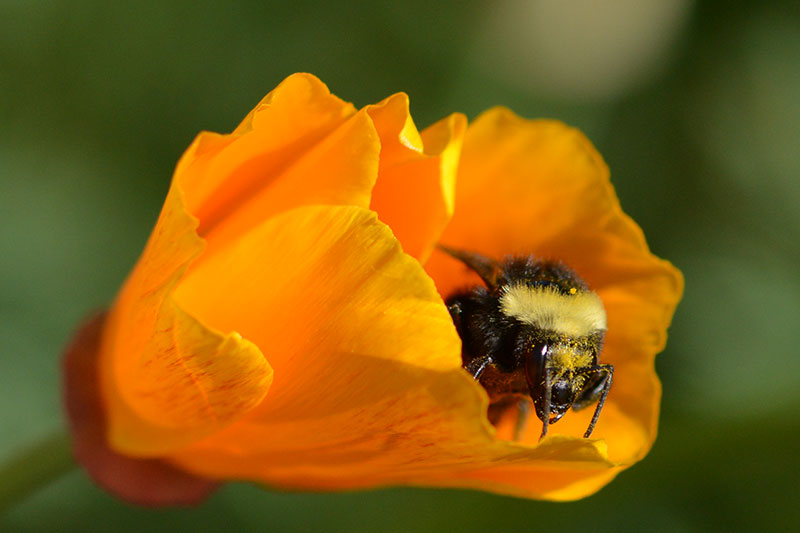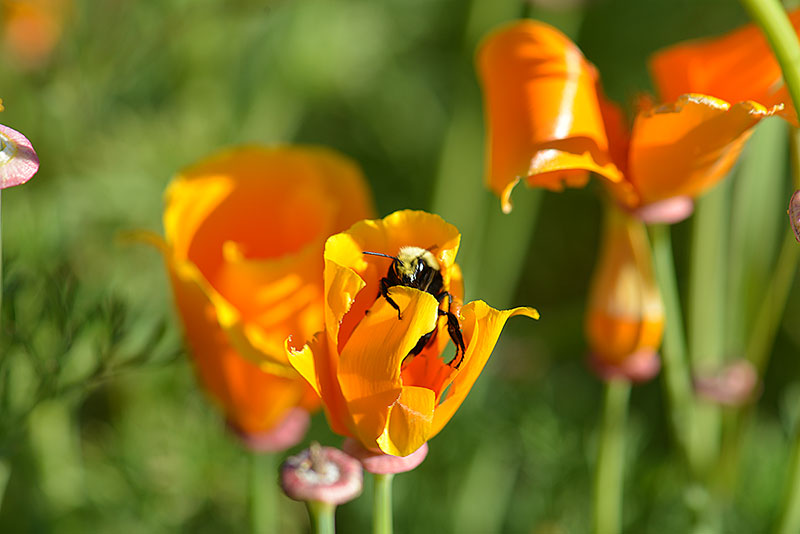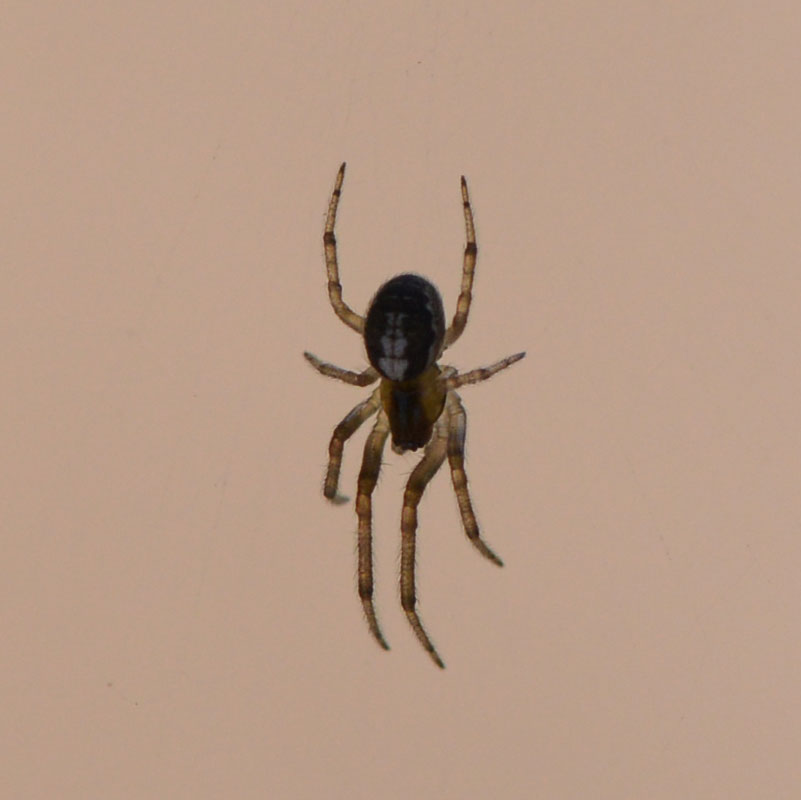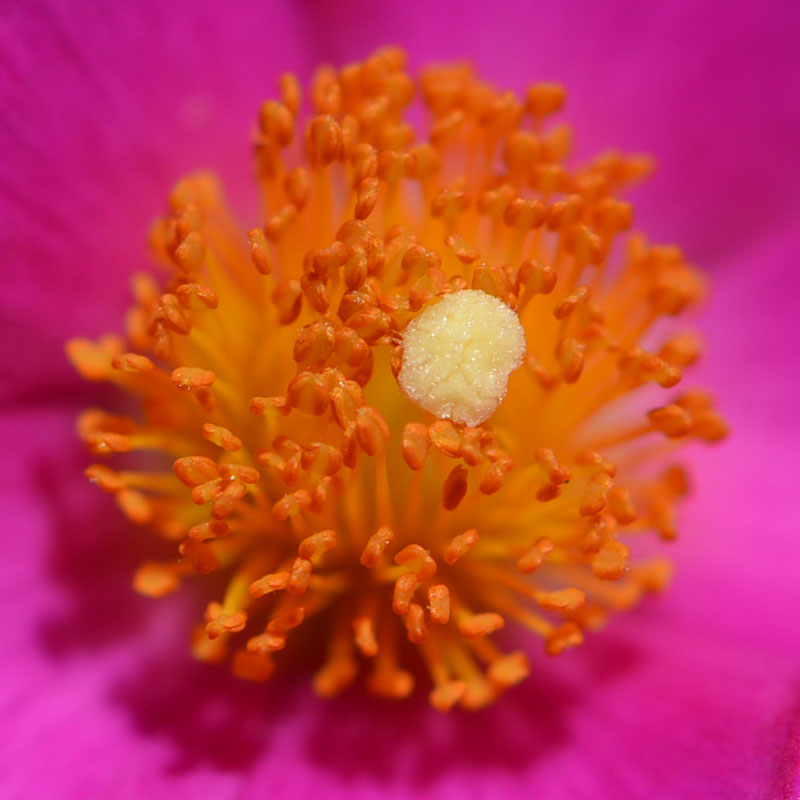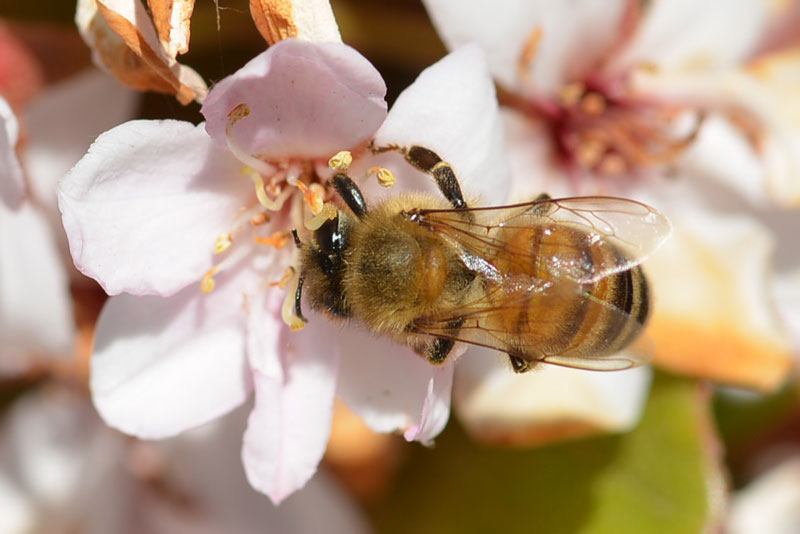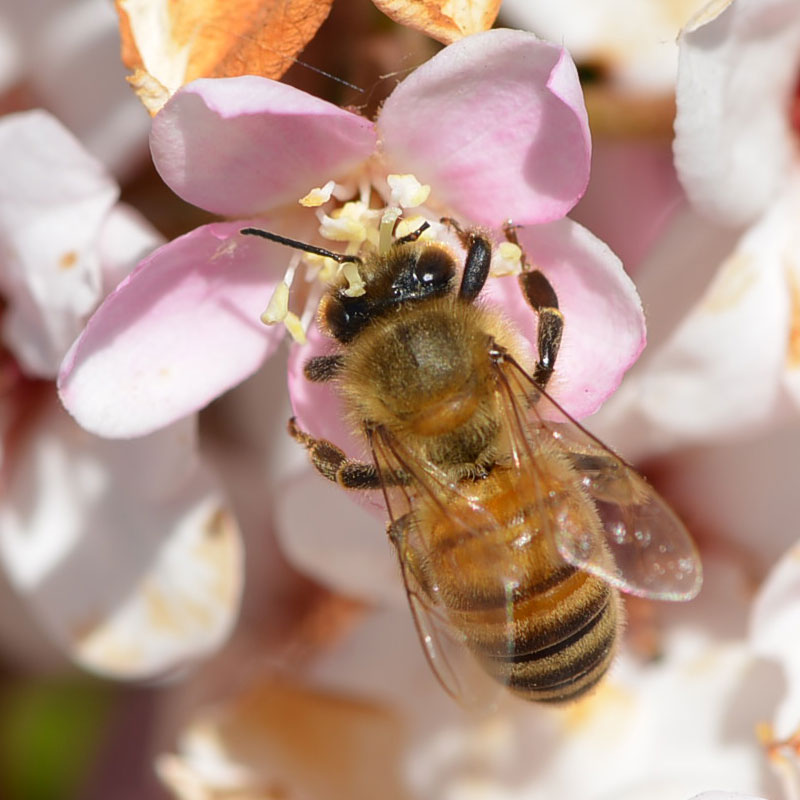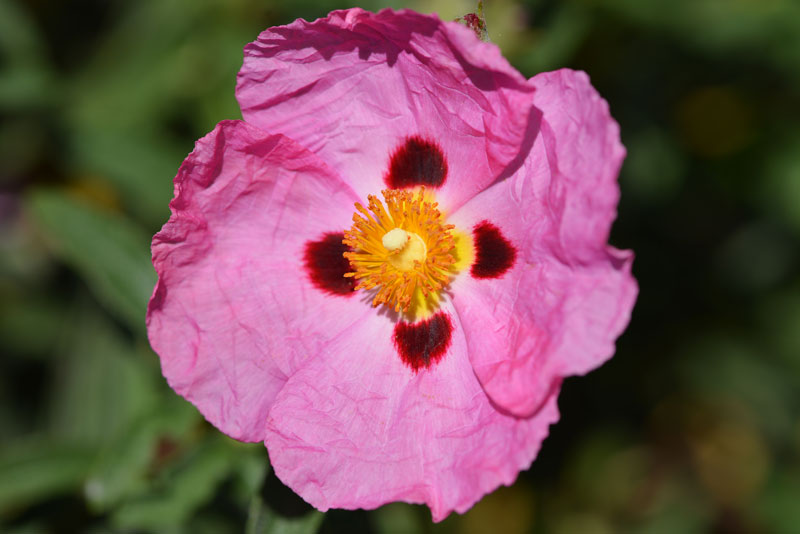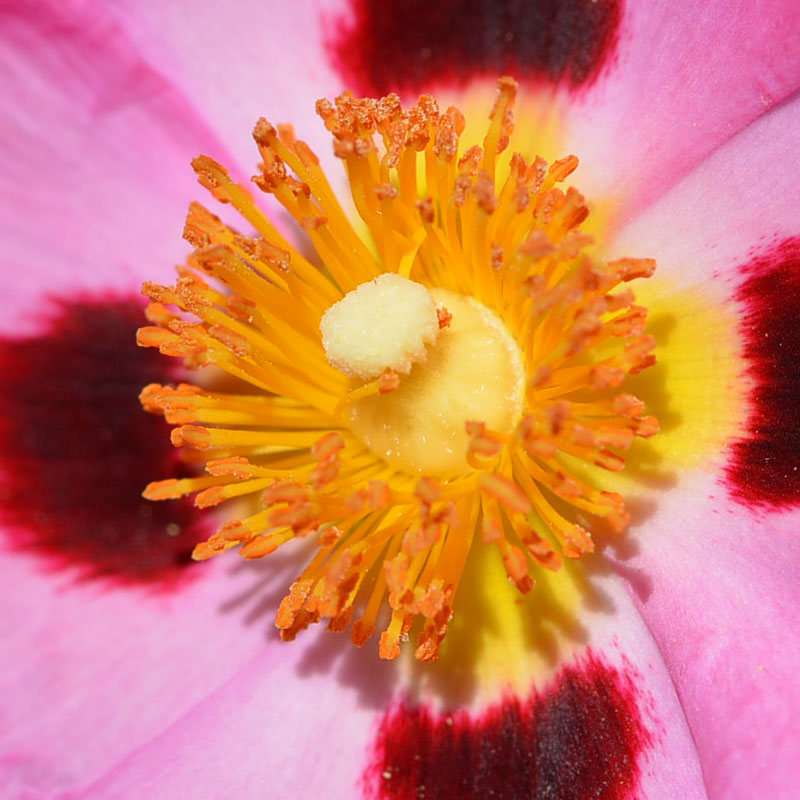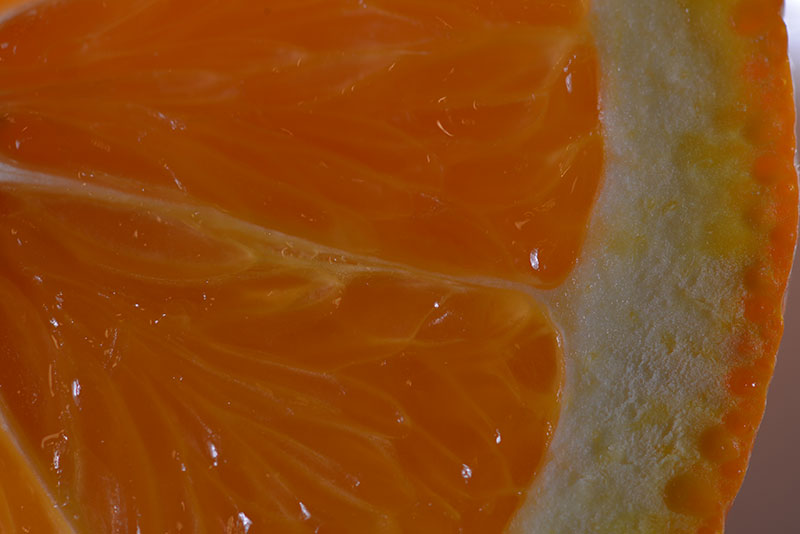When viewing macro photos, it might be difficult to determine the degree of magnification even for familiar subjects. At first glance, this may appear to be a photo from someone’s rock collection. However, this photo was taken at a playground. The rocks are really sand.
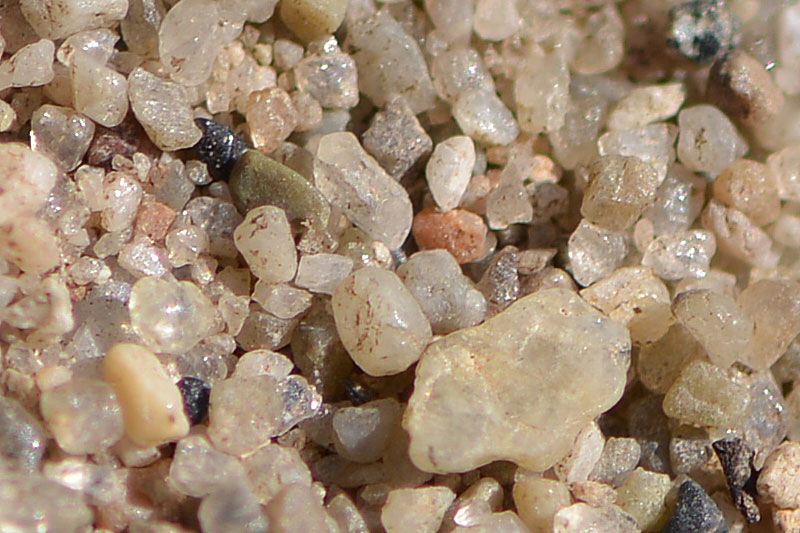
Nikon D800, AF-S VR Micro-Nikkor 105mm f/2.8G IF-ED, ISO 125, 180mm, f/8, 1/400s
For reference, I took a photo of a standard office park flower along the sidewalk. I have no idea what these are called, but they were growing every where.
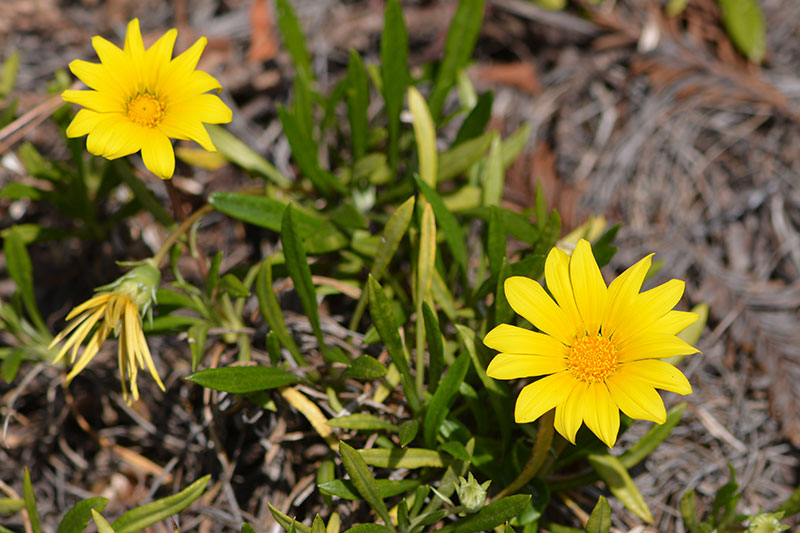
Nikon D800, AF-S VR Micro-Nikkor 105mm f/2.8G IF-ED, ISO 100, 180mm, f/8, 1/400s
With the 105mm macro lens and a 1.7x teleconverter, the flower appears like this up close:

Nikon D800, AF-S VR Micro-Nikkor 105mm f/2.8G IF-ED, ISO 100, 180mm, f/8, 1/800s
A 100% crop of the above photo reveals these details. Not bad for a handheld shot on a windy day.
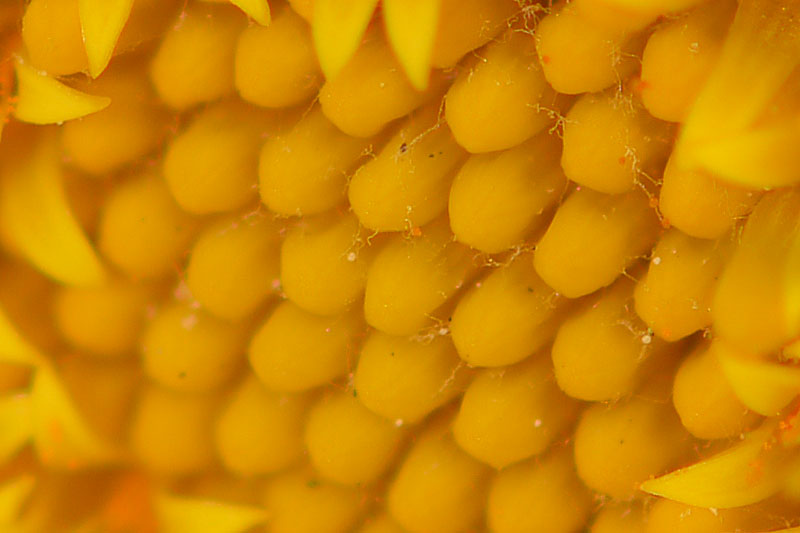
Here’s a different flower. Again, handheld and at the mercy of the wind. The center of the flower looks a little soft.
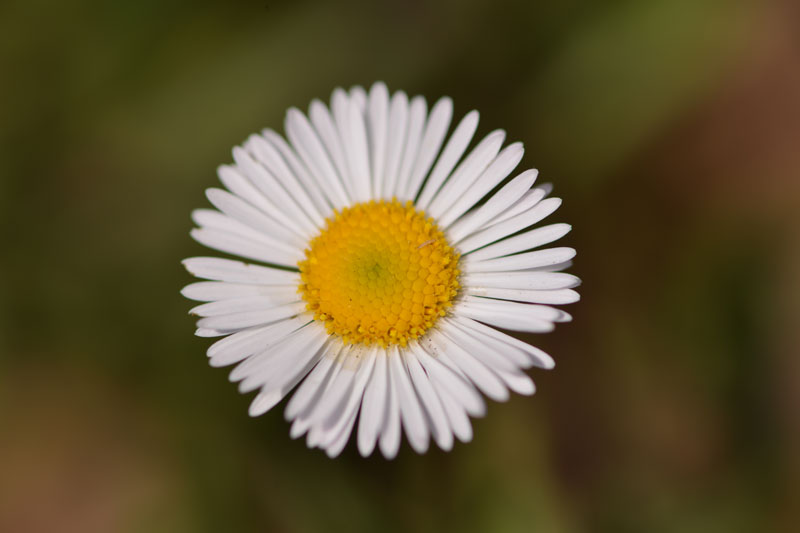
Nikon D800, AF-S VR Micro-Nikkor 105mm f/2.8G IF-ED, ISO 100, 180mm, f/8, 1/640s
But, look what shows up when viewed at 100%. The bug is actually visible in the above photo, but I didn’t even notice it when I first took the shot.
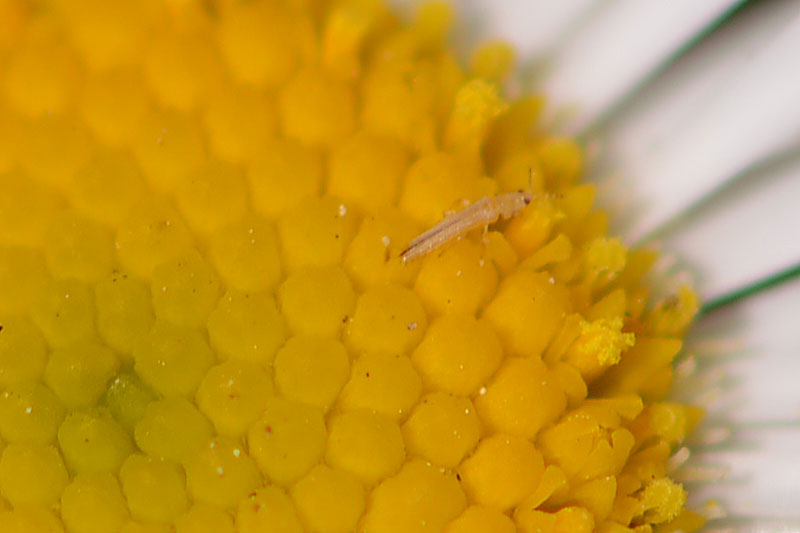
Here’s the dangerous part about getting a macro lens. You might relapse back to childhood with a serious fascination for insects. Who sees a bee and moves in to get an even closer look?
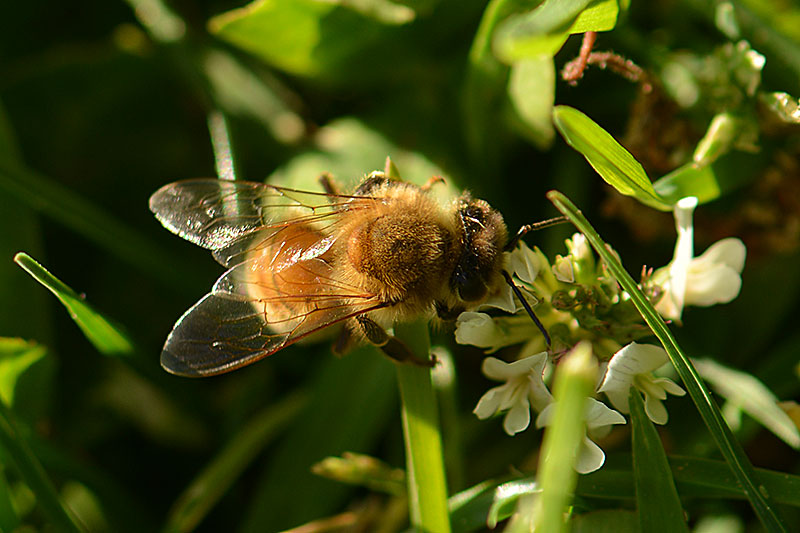
Nikon D800, AF-S VR Micro-Nikkor 105mm f/2.8G IF-ED, ISO 140, 180mm, f/8, 1/200s
This bee does not look happy.

Nikon D800, AF-S VR Micro-Nikkor 105mm f/2.8G IF-ED, ISO 250, 180mm, f/8, 1/250
This bumblebee was a lot easier to track than the one who was busy pollinating the poppy. For poppies, the bumblebee would disappear inside the flower for a second or so and I had to guess the timing of its departure. Here, the bumblebee remained in the open the entire time.
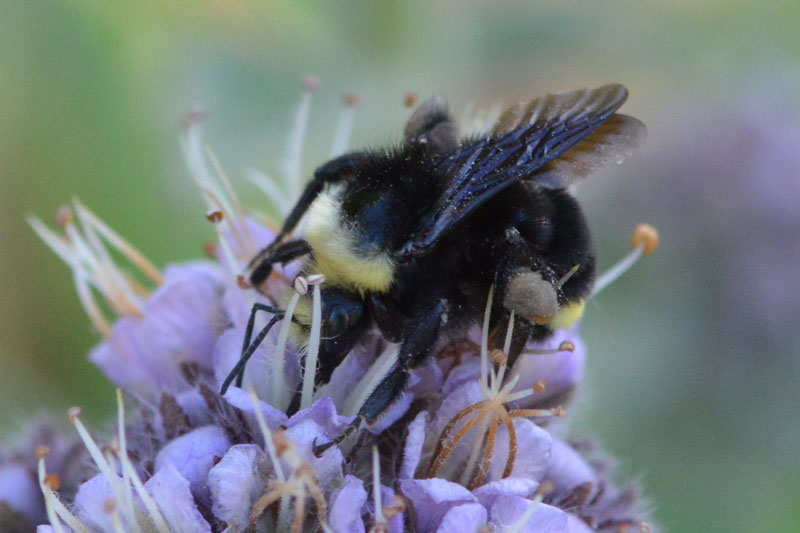
Nikon D800, AF-S VR Micro-Nikkor 105mm f/2.8G IF-ED, ISO 3600, 180mm, f/9, 1/800s
I even got lucky and caught the bumblebee just as it was about to take off for another flower.
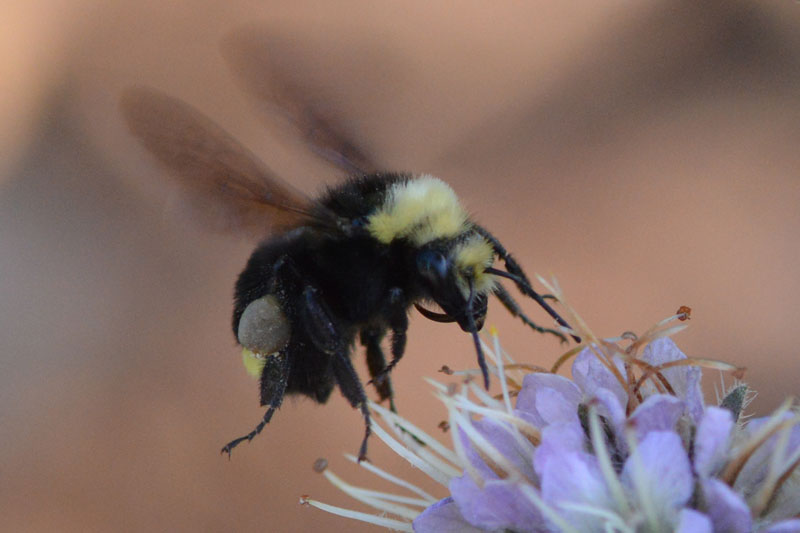
Nikon D800, AF-S VR Micro-Nikkor 105mm f/2.8G IF-ED, ISO 3200, 180mm, f/9, 1/800s

